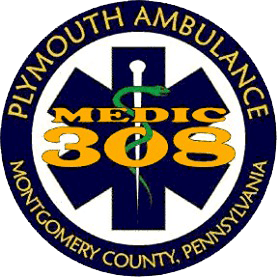
Community Education-Blood Thinning Medication
Welcome to the August edition of community education. This month we would like to do a follow up to our Trauma Center article with a question we get a lot when we transport patients to them. That question is, “Why do I have to go to a Trauma Center when I want to go to my local hospital.” This is usually in reference to patients that are on blood thinning medications. To answer this, we are going to go over what a blood thinner is, what it commonly used to treat and how it relates to traumatic injuries.
What is a blood thinning medication (blood thinner)?
There are two main types of blood thinners. Anticoagulants such as heparin or warfarin (also called Coumadin) slow down your body’s process of making clots. Antiplatelet drugs are the second type of blood thinners, such as aspirin, prevent blood cells called platelets from clumping together to form a clot.
What are they taken for?
Blood thinners are meant to help prevent clots from forming in your blood that could possibly lead to strokes, heart attacks, and other blockages. They are usually prescribed as a preventative measure when you have certain heart related illnesses such as an irregular heart rhythm called atrial fibrillation or A-Fib or after a surgery to prevent clots from forming.
How does a blood thinner affect me in a traumatic injury?
A blood thinner can slow down the clotting process which is detrimental in a traumatic injury where EMS wants to stop the bleeding quickly. If you have a head injury that may lead to bleeding into the brain, blood thinners are an issue due to allowing excessive blood into the brain causing a potentially life threatening situation.
Why transport to a Trauma Center?
There is a possibility that a patient may have a life threatening injury that is not immediately apparent. This injury is a subdural or subarachnoid hematoma, commonly known as intracranial hemorrhaging. We take patients to Trauma Centers so that they can have comprehensive testing and treatment should that be the situation and minimize any damage that could be sustained. You can also note that this will not happen every time as multiple factors go into transporting a patient to a specialty center versus a local hospital.
What are the symptoms that EMS looks for in a intracranial hemorrhaging (ICH)?
The signs and symptoms of ICH vary depending on the type, but they usually include a sudden and severe headache, a headache associated with a recent blow to your head, a mild and long-lasting headache, a headache accompanied by neck stiffness, confusion, drowsiness
vomiting more than twice in 24 hours, seizure, and even a coma.
What can I do to help?
As always, have a list of medications and demographic information available to EMS so that we can help determine the best appropriate hospital so that you get the best care. Another good idea is talking with your primary care doctor about the medications you are taking so that you have a better understanding about how they can affect you. Available on our website in our community education article about pertinent information is a form that you can fill out and have nearby in case of an emergency that will help EMS and the hospital with providing you the best care in case you are not able to give us the information.
